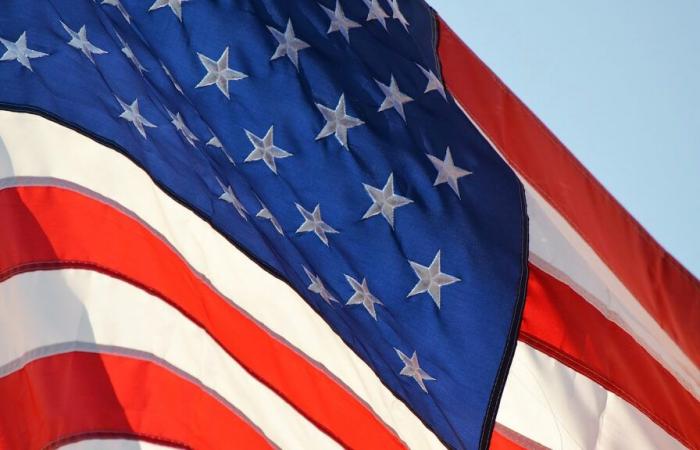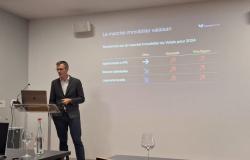With Donald Trump returning to the White House, the US technology industry could face major upheaval. His past mandate was marked by protectionist measures and a controversial vision of technological regulation, aimed in particular at limiting the influence of large platforms on freedom of expression and political life. At the dawn of this new mandate, experts are wondering how policies will evolve regarding new technologies, freedom of expression online and international relations, particularly with China.
A reinforced protectionist policy?
The Trump administration could adopt a similar, or even tougher, protectionist stance on technology. The rise of Chinese giants, such as Huawei and TikTok, had already led Trump to impose sanctions and restrict their operations in the United States. A return to the White House could mean a resumption, or even an intensification, of these restrictions. As technological competition between the United States and China intensifies, strict measures could once again target foreign companies considered a threat to national security.
With this in mind, Trump could strengthen the boycott of Chinese products and encourage domestic production of semiconductors, advanced technologies, and network infrastructure, as part of a digital “America First” policy. Congress could also be asked to financially support domestic manufacturing of strategic components, to reduce dependence on foreign supply chains. In other words, the return of Trump could give new impetus to American “technological sovereignty”.
Freedom of expression and regulation of platforms
Under the Trump administration, the issues of social media regulation and freedom of expression have been widely debated. Following his ban on Twitter and the restriction of his posts on other platforms in 2021, Trump criticized what he perceived as an attack on free speech by big tech companies. It could therefore revive debates around the reform of section 230 of the Communications Decency Act, which protects social media platforms from any liability for content published by users. A review of this law could lead to major consequences for Facebook, X (formerly Twitter), YouTube and other giants, potentially forcing them to filter more or less content.
Trump could also encourage measures so that platforms cannot “censor” conservative opinions. This could take the form of new laws guaranteeing equal access to content or limiting algorithmic moderation. Such decisions would, however, risk raising ethical and practical questions, including how to reconcile the control of hate speech and the guarantee of freedom of expression.
The rise of an alternative technological ecosystem
Trump’s return could encourage the emergence and development of alternative social networks and technological services, created specifically to escape the censorship practices perceived in Silicon Valley. Platforms like Truth Social, founded by Trump himself, could receive increased support and a more permissive regulatory framework. These networks, which attract a predominantly conservative audience, could benefit from legislation on platform neutrality, giving them more visibility and influence in the digital ecosystem.
Secure messaging and exchange services could also boom, driven by growing concerns about data protection and surveillance of traditional platforms. New independent players could thus gain importance in a fragmented and polarized market, where users choose their services according to their political beliefs.
Challenges for international relations and cybersecurity
Tensions between the United States and China could escalate under a Trump mandate, impacting key areas like cybersecurity and international technology alliances. The issue of boycotts of Chinese technologies, as well as pressure on trading partners to limit China’s access to certain technological infrastructure, could also resurface. In this dynamic, additional restrictions could be put in place to prevent technological exchanges between American and Chinese companies, reinforcing distrust between the two superpowers.
At the same time, cybersecurity could become a greater national priority. The previous mandate had already focused on protecting sensitive infrastructure and strengthening data security. However, some experts warn against excessive measures which, under the guise of security, could limit international exchanges and collaborations in the technological field, at the risk of isolating the American digital ecosystem.
The Silicon Valley business dilemma
For Silicon Valley giants, Trump’s return could be a time of heightened vigilance. They may face a complex dilemma: maintain their independence and current moderation practices, or adapt to the demands of a more interventionist administration. Strategic adjustments could emerge, including pressure to break up certain large technology companies due to their supposed outsized influence and for anti-competitive reasons.
Tech companies will also have to contend with stricter data protection policies, amid heightened concerns over user privacy and the use of personal data. If the Trump administration imposes more rigid rules for the storage and use of personal information, significant changes could be felt in the business model of targeted advertising, which is the foundation of the profitability of large platforms.
Towards an era of major transformations
Trump’s return to the presidency could mark the start of profound transformations in technology in the United States. Between increased protectionism, reforms to freedom of expression online, the rise of alternative platforms and international tensions, the issues are multiple and complex. The administration’s decisions will have lasting repercussions, not only for technology companies, but also for users, faced with increasingly polarized choices in their digital uses.
If the Trump II era promises to be turbulent for the new technology sector, it could also be the laboratory for an unprecedented restructuring of platforms, modes of regulation and the dynamics of freedom of expression online, redefining the American and global digital future.






